Table of Contents
Come join us now, and enjoy playing your beloved music and browse through great scores of every level and styles!
Can’t find the songbook you’re looking for? Please, email us at: sheetmusiclibrarypdf@gmail.com We’d like to help you!
Sorabji: In the Hothouse (from Two Piano Pieces) sheet music, Noten, partitura, spartiti 楽譜

Best Sheet Music download from our Library.

Please, subscribe to our Library.
If you are already a subscriber, please, check our NEW SCORES’ page every month for new sheet music. THANK YOU!
Browse in the Library:
Or browse in the categories menus & download the Library Catalog PDF:
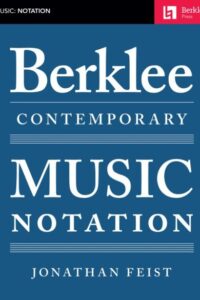
Who was Sorabji?
Kaikhosru Shapurji Sorabji: The Hermit of Modernist Maximalism
In the often-crowded pantheon of 20th-century composers, Kaikhosru Shapurji Sorabji (1892-1988) occupies a unique and enigmatic niche. A composer of staggering ambition, labyrinthine complexity, and self-imposed isolation, Sorabji crafted some of the most monumental, technically demanding, and stylistically idiosyncratic music ever conceived. His work, largely ignored during his lifetime and still challenging audiences today, represents a singular path through modernism – one defined by maximalism, intricate ornamentation, transcendental virtuosity, and a fierce, almost hermetic, independence.

Biography: A Self-Forged Identity
- Birth & Heritage: Born Leon Dudley Sorabji on August 14, 1892, in Chingford, Essex, England. His father was a Parsi engineer from India (thus the Persian-derived name Sorabji), and his mother was English-Spanish. This mixed heritage profoundly shaped his sense of identity, though he felt alienated from both cultures.
- The Name: Around 1914, he legally changed his name to Kaikhosru Shapurji Sorabji. “Kaikhosru” and “Shapurji” were Persian names chosen for their resonance and connection to ancient Persian history and Zoroastrianism, reflecting his deliberate construction of a unique persona.
- Musical Formation: Largely self-taught. He received some piano lessons in his youth but had no formal composition training. His musical education came through voracious listening, score study (especially Bach, Liszt, Busoni, Debussy, Ravel, Scriabin, Szymanowski, Medtner), and wide reading in literature, philosophy, and the occult.
- Early Career & Criticism: Worked as a music critic (under the pseudonym “S. Godfrey”) for outlets like The New Age and The New English Weekly from the 1910s to the 1930s. His critiques were famously acerbic, insightful, and often scathing, particularly targeting English musical provincialism and composers he deemed mediocre (which was most of them).
- The Recluse: Deeply disillusioned by the musical establishment and critical reception to his early performances (which were rare and often controversial), Sorabji gradually withdrew from public musical life starting in the late 1930s. After his mother’s death in 1940, he retreated almost completely to his secluded home “The Eye” in Corfe Castle, Dorset, where he lived with his companion, Reginald Norman Best, until his death. He forbade performances of his music for decades.
- The Ban Lifted: In 1976, pressured by a growing underground interest spearheaded by pianists like Yonty Solomon and Alistair Hinton (who later became his literary executor), Sorabji reluctantly lifted the ban on performances, provided he approved the performer.
- Death: Sorabji died on October 15, 1988, in Winfrith Newburgh, Dorset, leaving behind a colossal legacy of unpublished manuscripts.
Works: Monuments of Sound

Sorabji’s output is vast and overwhelmingly dominated by solo piano music, though he also composed orchestral works, chamber music, organ symphonies, and songs. His works are renowned for their extreme length, density, and technical difficulty, pushing the boundaries of playability.
- Key Masterpieces:
- Opus Clavicembalisticum (1930): His most famous (or infamous) work. A colossal 4+ hour piano epic in 12 movements (including fugues, passacaglias, toccatas, cadenzas), often considered one of the most challenging solo piano works ever written. A summit of contrapuntal complexity and virtuosic display.
- Symphonic Variations for Piano (1935-37): Another monumental work, exploring vast variation forms over an extended duration.
- Sequentia Cyclica super “Dies iræ” ex Missa pro Defunctis (1948-49): A massive cycle of 27 variations on the “Dies Irae” chant, demonstrating his intricate contrapuntal and transformative skills.
- 100 Transcendental Studies (1940-44): True to their name, these studies explore extreme technical and expressive demands far beyond those of Liszt or Chopin.
- Symphonies for Solo Piano: Several exist, including his Symphony No. 2 (“Jāmī”), blending orchestral textures and scope onto the piano.
- Gulistān – Nocturne for Piano (1940): A prime example of his lush, perfumed, and incredibly intricate “Persian”-inspired style.
- Concerti: He wrote several for solo piano and orchestra (e.g., Concerto per suonare da me solo e senza orchestra, per divertirsi), which are symphonic in scale and require superhuman virtuosity.
- Symphonies for Organ: Vast, complex works exploring the sonic possibilities of the instrument.
Analysis of Style: A Universe of Complexity
Sorabji’s style is instantly recognizable yet difficult to categorize. It synthesizes diverse elements into a unique and overwhelming whole:
- Maximalism: This is the defining characteristic. Sorabji embraced extremes:
- Length: Works lasting several hours are common.
- Density: Highly polyphonic textures, often with multiple independent melodic lines woven together in complex counterpoint (influenced by Bach, Busoni).
- Virtuosity: Demands transcendental technique – cascades of notes, complex polyrhythms, wide leaps, immense power, and extreme delicacy. He wrote as if the pianist had four hands.
- Ornamentation: Baroque-like ornamentation (trills, mordents, turns, grace notes) is ubiquitous, often layered and integral to the texture, creating shimmering, kaleidoscopic surfaces (influenced by Scriabin, Szymanowski, Middle Eastern/Persian music).
- Dynamic Range: From barely audible whispers to thunderous, percussive climaxes.
- Harmony: A complex fusion:
- Rooted in late-Romantic chromaticism (Scriabin, Szymanowski, early Schoenberg).
- Freely employed dissonance, clusters, and intricate chord structures.
- Often retained a sense of tonal centers or polarity, even amidst dense chromaticism (unlike strict atonality).
- Incorporated modal inflections, sometimes evoking Persian or Spanish flavors.
- Rhythm: Highly complex and fluid:
- Frequent use of polyrhythms (multiple simultaneous rhythms), cross-rhythms, and nested tuplets (triplets within quintuplets, etc.).
- Tempo often fluctuates wildly, requiring immense control.
- A sense of improvisatory freedom within highly structured forms.
- Form: Often large-scale, complex, and idiosyncratic:
- Favored variations (passacaglias, chaconnes), fugues, toccatas, and intricate multi-movement structures (like the Opus Clavicembalisticum).
- Forms were often expansive and cumulative, building through layered repetition and intensification rather than traditional development.
- Architecture was paramount, even in the densest textures.
- Influences (Assimilated, Not Imitated):
- Ferruccio Busoni: The most profound influence. Busoni’s ideas of “Young Classicism,” the transcendental potential of the piano, the fusion of Bachian counterpoint with modern harmony, and the concept of “Junge Klassizität” resonated deeply. Sorabji dedicated his Opus Clavicembalisticum to Busoni’s memory.
- Franz Liszt: Virtuosity, thematic transformation, large-scale forms, and the symphonic poem concept translated to piano.
- J.S. Bach: Contrapuntal mastery, structural rigor, and the use of forms like fugue and passacaglia.
- Alexander Scriabin: Mysticism, harmonic language, dense textures, and ecstatic climaxes.
- Karol Szymanowski: Sensuous harmony, intricate ornamentation (especially in the “Persian” inspired works like Métopes and Masques), and voluptuous textures.
- Debussy & Ravel: Color, texture, exoticism, and pianistic refinement.
- Mediterranean & Persian Cultures: While not authentically recreating these styles, he evoked their essence through ornamentation, melodic turns, and titles (Gulistān, Jāmī), reflecting his fascination with his Persian heritage and the wider Orient.
- Aesthetic: Sorabji’s music aimed for:
- Transcendence: Pushing beyond perceived limits of instrument, performer, and listener.
- Luxuriance & Opulence: A rich, sensual, almost decadent sound world.
- Intellectual Rigor: Underlying the sensual surface was meticulous structural planning.
- Individualism: A complete rejection of prevailing trends (serialism, neoclassicism, minimalism) in favor of his own uncompromising vision.
Legacy: From Obscurity to Cult Status
Sorabji’s legacy is complex and evolving:
- Decades of Neglect: His self-imposed exile and performance ban meant his music was virtually unknown outside a tiny circle for nearly 40 years. Manuscripts were inaccessible, unplayable, and unpublished.
- The Pioneers (1970s-): The lifting of the ban sparked interest. Pianists like Yonty Solomon, Michael Habermann, Geoffrey Douglas Madge (who made the first complete recording of Opus Clavicembalisticum in 1977), and later Marc-André Hamelin, Jonathan Powell, Fredrik Ullén, and Ronald Stevenson began the monumental task of learning, performing, and recording his works. This required immense dedication and technical prowess.
- Publication & Scholarship: The Sorabji Archive, established by Alistair Hinton (Sorabji’s literary executor), has been crucial in cataloging, editing, and facilitating the publication of scores (primarily by Dover Publications and The Sorabji Music Archive). Scholarly work is gradually increasing.
- Recordings Renaissance: The CD era and digital distribution (YouTube, streaming) have been transformative. Dedicated labels (Altarus, BIS, Toccata Classics, Piano Classics) have released numerous recordings, making this once-inaccessible music available globally. Complete cycles of the 100 Studies and other major works are underway.
- The Cult & The Challenge: Sorabji remains a “composer’s composer” and a cult figure. His music is not mainstream concert fare due to its extreme demands and duration. However, it commands deep respect and fascination among pianists, composers, and listeners drawn to its unique sound world and uncompromising vision. He is seen as the ultimate iconoclast, forging a path utterly independent of 20th-century musical fashions.
- Influence: His direct influence on other composers is hard to pinpoint due to his obscurity, but he stands as a powerful symbol of uncompromising artistic integrity and the exploration of extreme complexity and virtuosity. Composers interested in maximalism, intricate counterpoint, or pushing pianistic limits inevitably encounter his shadow.
- Copyright Controversy: The complex copyright status of his works (involving the Sorabji Archive and publishers) has sometimes been a point of friction within the community of performers and scholars seeking access.
Sorabji: The Solitary Giant
Kaikhosru Shapurji Sorabji was a true original. He inhabited a musical universe entirely of his own making, synthesizing diverse influences into a style characterized by unparalleled complexity, sensuous opulence, and transcendental ambition. His deliberate withdrawal from the world ensured decades of obscurity, but the dedication of pioneering performers and the power of recording technology have brought his extraordinary soundscapes to light. While his music remains challenging and demanding, it offers unparalleled rewards: a journey into a world of labyrinthine beauty, overwhelming power, and intellectual fascination. Sorabji stands as a testament to the power of an utterly individual artistic vision, uncompromising in its scope and ambition, a solitary giant whose monumental creations continue to challenge and inspire. He redefined the possible for the piano and left a legacy that continues to unfold as more performers dare to scale his musical Himalayas.
“In the Hothouse” is one of Sorabji’s most evocative and frequently performed works, serving as a perfect entry point into his dense, sensuous sound world. Here’s a detailed look at this fascinating piece:
Context: Two Piano Pieces (1918)
- Composed: 1918 (early in Sorabji’s career, age 26).
- Publication: First published in 1920, making it one of the earliest Sorabji works available in print.
- The Pair: “In the Hothouse” is paired with “Toccata” – a contrasting, hyper-virtuosic, and structurally complex piece showing his Busoni/Liszt influences. “In the Hothouse” offers the sensual, atmospheric counterpoint.
- Significance: Represents Sorabji’s early mastery of texture, harmony, and evocative atmosphere. It predates his gargantuan works but already displays his unique voice.
“In the Hothouse”: A Sensory Immersion
- Title & Imagery: The title instantly conjures an environment: humid, lush, teeming with exotic, overripe plant life, heavy perfumes, and stifling, enclosed heat. Sorabji translates this sensory overload into sound.
- Form & Structure: Relatively free and rhapsodic. It unfolds as a continuous, organic stream of consciousness rather than adhering to strict classical forms. Think of it as an elaborate, decadent arabesque.
- Style & Character:
- Extreme Sensuality: This is the defining feature. The music drips with lush, complex harmonies and suffocatingly rich textures.
- Harmony: Deeply chromatic, rooted in late Scriabin and early Szymanowski. Expect dense, constantly shifting chords: augmented harmonies, whole-tone inflections, unresolved dissonances creating tension, and sudden moments of surprising consonance like shafts of light piercing foliage. It avoids traditional tonality but gravitates around implied centers.
- Texture: Thick, layered, and constantly in motion. Tremolos, trills, rapid filigree (ornamental passages), and cascading arpeggios create a shimmering, humid haze. Melodies are often embedded within this dense undergrowth rather than standing clearly apart. The writing often requires the pianist to sustain multiple layers simultaneously.
- Rhythm: Fluid and flexible, often obscured by the sheer density of notes and ornamentation. Rubato (expressive tempo fluctuations) is essential. While less overtly complex polyrhythmically than his later works, the rhythmic flow feels organic and improvisatory.
- Dynamics & Articulation: Wide dynamic range, often shifting suddenly between extremes (e.g., thunderous climaxes collapsing into fragile whispers). Articulation varies from sharp staccatos to legatissimo passages that blur together. Pedaling is crucial for sustaining the harmonic haze and creating resonance.
- Ornamentation: Quintessential early Sorabji. Trills, mordents, turns, and grace notes are not mere decoration; they are the texture, creating constant flickering movement and contributing to the claustrophobic, teeming atmosphere. This foreshadows the intricate ornamentation dominating his mature style.
- Emotional Landscape: Evokes opulence, decadence, languor, mystery, stifling heat, hidden dangers, and overwhelming sensory stimulation. There’s a sense of beauty bordering on the grotesque due to its sheer intensity.
Influences Audible in “In the Hothouse”
- Scriabin (Primary): The harmonic language (mystic chords, unresolved dissonance, ecstatic climaxes), the sensual atmosphere, and the use of trills/tremolos are deeply indebted to Scriabin’s late sonatas and poems (e.g., Vers la flamme). Sorabji pushes Scriabin’s decadence further.
- Szymanowski: The opulent textures, perfumed harmonies, and “orientalist” exoticism (though abstracted here) strongly recall Szymanowski’s “Métopes” or “Masques,” which Sorabji admired deeply.
- Debussy: The focus on atmosphere, texture, and harmonic color (whole-tone scales, parallel chords) shows Debussy’s influence, though rendered with far greater density and intensity.
- Ravel: The virtuosic filigree and lush harmonies (think “Gaspard de la Nuit,” especially “Ondine” or “Le gibet”) are a touchstone, again amplified.
- Liszt: The rhapsodic freedom and dramatic gestures hint at Liszt, though filtered through a post-Scriabinesque lens.
Performance Challenges
- Texture & Balance: Maintaining clarity amidst the dense, rapidly shifting textures is paramount. The pianist must carefully voice chords and layers to prevent muddiness while sustaining the essential harmonic haze.
- Ornamentation as Texture: Executing the constant ornamentation smoothly and evenly, integrating it into the melodic and harmonic flow rather than treating it as mere decoration.
- Dynamic Control: Navigating the extreme dynamic contrasts and sudden shifts without sounding jarring. Creating a true pianissimo shimmer within complexity is incredibly difficult.
- Rubato & Phrasing: Applying expressive tempo fluctuations naturally while maintaining the overall structural coherence and forward momentum of the rhapsodic form.
- Pedaling: Using the pedal to create resonance and blend without causing harmonic blurring or loss of rhythmic definition. Requires exceptional sensitivity.
- Stamina & Focus: While shorter than his later works (typically 12-15 minutes), the piece demands intense concentration and physical control to sustain the atmosphere and navigate the technical intricacies.
Legacy & Significance of “In the Hothouse”
- Accessibility: It remains one of Sorabji’s most “accessible” works due to its evocative title, relatively shorter duration, and concentrated expression. It’s a frequent choice for pianists introducing audiences to Sorabji.
- Blueprint: It serves as a crucial blueprint for Sorabji’s mature style, showcasing his core preoccupations: sensuality, harmonic density, intricate ornamentation as texture, and atmospheric evocation, all present in embryonic form.
- Performance History: Despite Sorabji’s later ban, “In the Hothouse” (along with the Toccata) was one of the few pieces occasionally performed during his lifetime (e.g., by Sorabji himself and pianist Reginald Paul) and became a key work for the pioneering generation post-1976 (Yonty Solomon, Michael Habermann, Marc-André Hamelin, Jonathan Powell, Fredrik Ullén).
- Gateway Piece: It functions as a vital “gateway drug” into Sorabji’s world. Its success in conveying its intense atmosphere often encourages listeners to explore his more monumental, complex works.
- Standalone Masterpiece: Regardless of its role as an introduction, it stands as a perfectly formed and powerful piece of early modernist piano writing, a miniature tone poem of extraordinary evocative power.
“In the Hothouse” is a sun-drenched, overripe, and intoxicating immersion into Sorabji’s unique aesthetic. It captures the essence of his sensual maximalism in a concentrated dose, showcasing his debt to Scriabin and Szymanowski while asserting his own distinct voice. Its evocative power, technical brilliance, and relative brevity ensure its enduring place as one of his most beloved and frequently performed works, offering a compelling glimpse into the hothouse of Sorabji’s extraordinary musical imagination.
| Artist or Composer / Score name | Cover | List of Contents |
|---|---|---|
| James Newton Howard A very nice kiss OST from The Tourist |
 |
|
| James Newton Howard He Sleeps Pretty Woman Theme |
 |
|
| James Quinn A Gentle Sunlight Piano Solo | James Quinn A Gentle Sunlight Piano Solo | |
| James Rhodes Fugas. O La Ansiedad De Sentirse Vivo Book in Spanish Español |
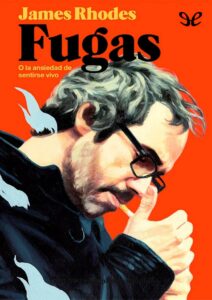 |
|
| James Rhodes Instrumental A Memoir Of Madness, Medication And Music Book |
 |
|
| James Rhodes Instrumental Book in Spanish Español |
 |
|
| James Scott – Kansas City Rag |
 |
|
| James Scott – Efficiency Rag |
 |
|
| James Scott – Quality Rag |
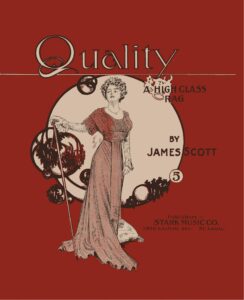 |
|
| James Spiteri Alone |
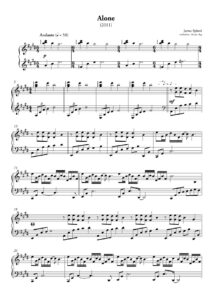 |
|
| James Taylor Anthology Piano Vocal Guitar |
 |
James Taylor Anthology Piano Vocal Guitar |
| James Taylor Guitar Tab Songbook |
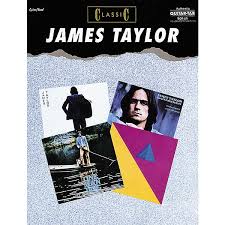 |
James Taylor Guitar Tab Songbook |
| James Taylor The Best Of James Taylor Recorded Guitar Versions with TABs |
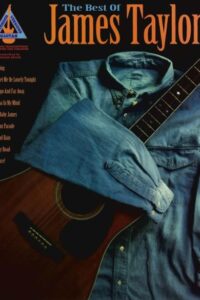 |
James Taylor The Best Of James Taylor Recorded Guitar Versions with TABs |
| James Taylor The Complete Guitar Player Songbook |
 |
James Taylor The Complete Guitar Player Songbook |
| James Taylor The Great Songs Of James Taylor Piano Vocal Guitar |
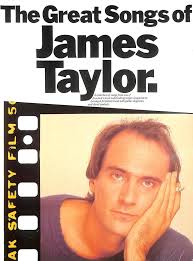 |
James Taylor The Great Songs Of James Taylor Piano Vocal Guitar |
| Jamie Cullum – Everlasting Love | ||
| Jamie Cullum – The Pursuit Songbook |
 |
Jamie Cullum The Pursuit |
| Jamie Cullum Catching Tales Songbook |
 |
Jamie Cullum Catching Tales Songbook |
| Jamie Cullum Twenty Something Piano Songbook |
 |
Jamie Cullum Twenty |
| Jamie Culum – High And Dry | ||
| Jamie Duffy Solas Sheet Music piano solo | Jamie Duffy Solas Sheet Music piano solo | |
| Jamiroquai – Deeper Underground | ||
| Jamiroquai High Times Singles 1992 2006 |
 |
Jamiroquai High Times Singles 1992 2006 |
| Jan Garbarek Blue Sky Bb C Eb Transcription | Jan Garbarek Blue Sky Bb C Eb Transcription | |
| Jan Garbarek Brother Wind And Brother Wind March Transcriptions | Jan Garbarek Brother Wind And Brother Wind March Transcriptions | |
| Jan Hammer – Crocketts Theme | ||
| Jan Hammer Crockett’s Theme (Miami Vice) Piano Solo |
 |
|
| Jan Johaansson George Riedel Visa Fran Utanmyra |
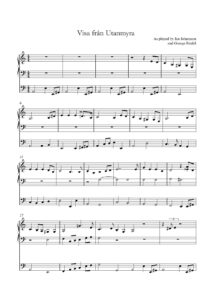 |
|
| Jan Johansson Klara Stjärnorna |
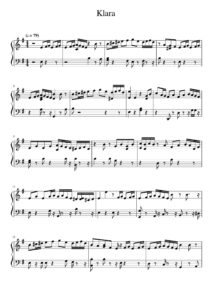 |
|
| Jan Johansson Kvällar I Moskvas Förstäder (Moscow Nights) |
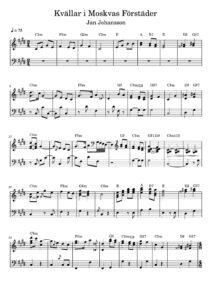 |
|
| Jan Johansson Pippi Langstrump Easy Piano Pipi Calzaslargas |
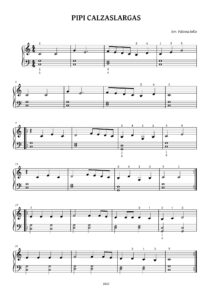 |
|
| Jan Johansson Visa Frn Utanmyra |
 |
|
| Janacek – Stücke für Klavier | Janacek – Stücke für Klavier | |
| Janacek – In The Mists |
 |
|
| Janacek – On the Overgrown Path (Book 1 and 2) |
 |
|
| Janacek – Zdenka Variations |
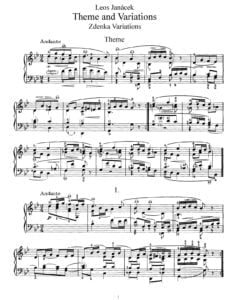 |
|
| Janacek 15 Moravian Folksongs |
 |
|
| Janacek Complete Piano Works |
 |
|
| Janacek Piano Sonata 1.X.1905 |
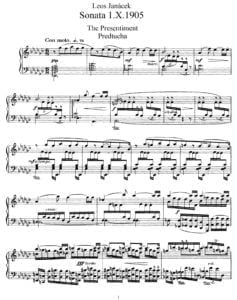 |
|
| Jane Birkin – Livre D’or Piano Vocal guitar Chords |
 |
Jane Birkin – Livre D’or |
| Jane Eyre – The Musical Piano Vocal Score by John Caird and Paul Gordon |
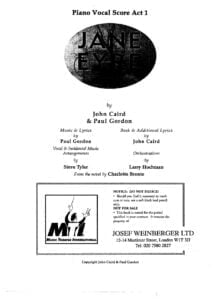 |
|
| Jane Eyre 2006 (Robert Lane) | ||
| Jane Eyre’s Theme (easier version) Alessio Vlad & Claudio Cappo | ||
| Jane Eyre’s Theme (Jane Eyre 1996 OST) Alessio Vlad & Claudio C | ||
| Jane’s Addiction Best of Jane’s Addiction Guitar TAB |
 |
Jane’s Addiction Best of Jane’s Addiction Guitar TAB |
| Jane’s Infancy (Jane Eyre OST 1996) Claudio Capponi & Alessio Vlad | ||
| Janek Gwizdala Songs and Solos |
 |
Janek Gwizdala Songs Solos |
| Janet Jackson – Again | ||
| Janet Jackson – Runaway | ||
| Janet Jackson – Together Again | ||
| Janet Jackson All For You Songbook |
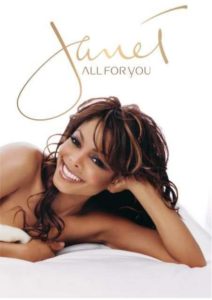 |
Janet Jackson All For You Songbook |
| Janet Jackson Design of a decade (1986-1996) |
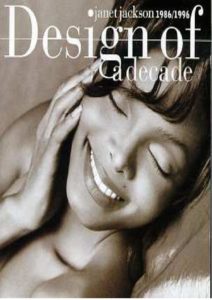 |
Janet Jackson |
| Janet Jackson The Velvet Rope Songbook |
 |
Janet Jackson The Velvet Rope Songbook |
| Janis Joplin – A Collection of 16 Janis Joplin Classics Piano Vocal Guitar Chords |
 |
Janis Joplin – A Collection of 16 Janis Joplin Classics Piano Vocal Guitar Chords |
| Janis Joplin – Piece Of My Heart Sheet music | Janis Joplin – Piece Of My Heart Sheet music | |
| Janis Joplin – Summertime Sheet music |
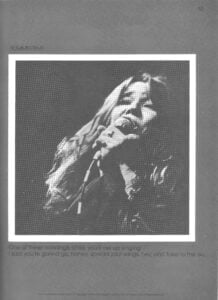 |
|
| Janis Joplin – The Best Of (Guitar Songbook) |
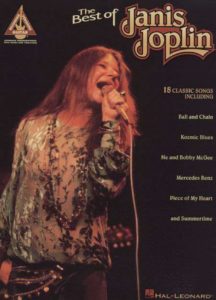 |
Janis Joplin – The Best Of (Guitar Songbook) |
| Janis Joplin A Night With Janis Joplin Songbook Piano Vocal Selections |
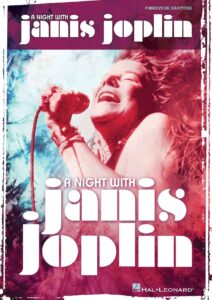 |
Janis Joplin A Night With Janis Joplin Songbook Piano Vocal Selections |
| Japanese folk songs |
 |
Japanese folk songs |
| Japanese Music Harmony The Fundamental Theory Of Key Fluctuation (Kayano Chino) Book |
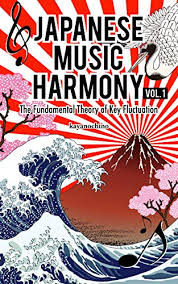 |
Japanese Music Harmony The Fundamental Theory Of Key Fluctuation (Kayano Chino) Book |
| Jaques Brel and Gerard Jouannest – Ne Me Quitte Pas. Arr. guitar | Jaques Brel and Gerard Jouannest – Ne Me Quitte Pas. Arr. guitar | |
| Jaques Brel and Gerard Jouannest – Ne Me Quitte Pas. Arr. guitar.mscz | ||
| Jarrell, Michael – Modifications For Piano And Ensemble (Modifications pour piano et ensemble instrumental) |
 |
|
| Jarrell, Michael – Rhizomes Assonance Viib For Two Pianos Three Percussions And Electronics 1993 |
 |
|
| Jason Mraz Best Of Jason Mraz Piano Vocal Guitar |
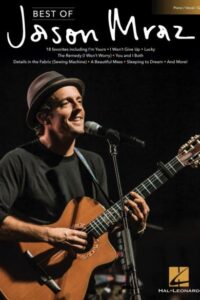 |
Jason Mraz Best Of Jason Mraz Piano Vocal Guitar |
| Jason Mraz Love Is A Four Letter Word Piano Vocal Guitar |
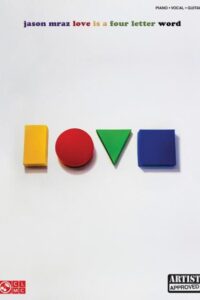 |
Jason Mraz Love Is A Four Letter Word Piano Vocal Guitar |
| Jason Mraz We Sing We Dance We Steal Things Piano Vocal Guitar |
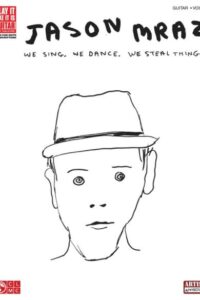 |
Jason Mraz We Sing We Dance We Steal Things Piano Vocal Guitar |
| Jason Robert Brown And I Will Follow From Songs For A New World |
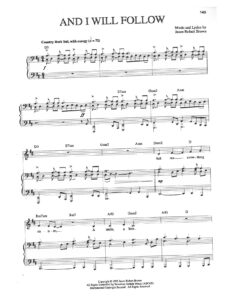 |
|
| Jason Robert Brown Collection 24 Selections From Shows And Albums Piano Vocal |
 |
Jason Robert Brown Collection 24 Selections From Shows And Albums Piano Vocal |
| Jason Robert Brown Hear My Song Solo Version From Songs For A New World |
 |
|
| Jaw – Here Comes The Sun | ||
| Jaws Theme (Sheet Music) by John Williams |
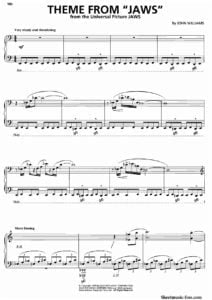 |
|
| Jay Chou – A Secret I Cannot Tell | ||
| Jay Chou – Black Humor | ||
| Jay Chou – Maple | ||
| Jay Chou – Stranded | ||
| Jay Chou – The Longest Movie | ||
| Jay Chou – Tornado | ||
| Jay Unger – Ashokan Farewell | ||
| Jazz The Rough Guide – by Ian Carr (Book) |
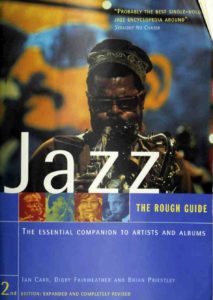 |
|
| Jazz (NPR Curious Listener’s Guide to) Loren Schoenberg (Book) |
 |
|
| Jazz (Scott Deveaux Gary Giddins) Book |
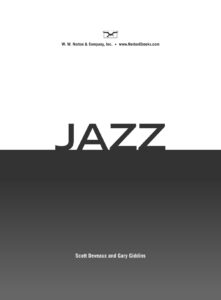 |
|
| Jazz & Popular Songs (Arr. For Guitar) John Duarte |
 |
Jazz & Popular Songs (Arr. For Guitar) John Duarte |
| Jazz All New Volume II |
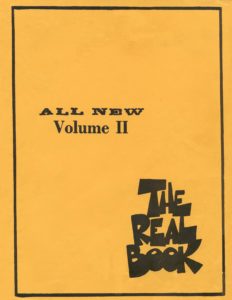 |
|
| Jazz And Blues 3 – Easy Graded Piano Pieces Philip Cannon |
 |
Jazz And Blues 3 – Easy Graded Piano Pieces by Philip Cannon |
| Jazz and Blues No. 1 – Easy Graded Piano Pieces Philip Cannon |
 |
Jazz and Blues No. 1 – Easy Graded Piano Pieces Philip Cannon |
| Jazz and Blues No. 2 – Easy Graded Piano Pieces Philip Cannon |
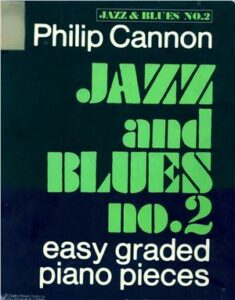 |
Jazz and Blues No. 2 – Easy Graded Piano Pieces Philip Cannon |
| Jazz and Blues No. 4 – Easy Graded Piano Pieces David Kay |
 |
Jazz and Blues No. 4 – Easy Graded Piano studies David Kay |
| Jazz at Christmas – Frank Mantooth |
 |
|
| Jazz Ballads Jazz Guitar Chord Melody Solos by Jeff Arnold with Tablature |
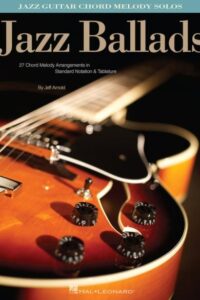 |
Jazz Ballads Jazz Guitar Chord Melody Solos by Jeff Arnold with Tablature |
| Jazz Ballads Jazz Piano Solos Series Vol. 10 (24 classics) |
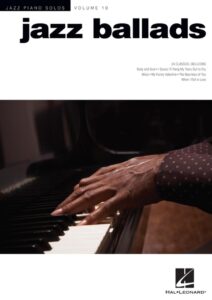 |
Jazz Piano Solos Ballads Vol. 10 (24 classics) |
| Jazz Band Pianist Basic Skills by Jeremy Siskind |
 |
|
| Jazz Bass Compendium Sigi Busch |
 |
|
| Jazz Blues – Jazz Piano Solos Series Volume 2 – 17 classics |
 |
Jazz Blues – jazz piano solos (17 classics) |
| Jazz Blues 2nd Edition Jazz Piano Solos Series Volume 2 |
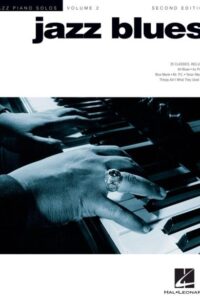 |
Jazz Blues 2nd Edition Jazz Piano Solos Series Volume 2 |
| Jazz Blues Soloing For Guitar with Tablature The Comprehensive study guide by Joseph Alenxander |
 |
Jazz Blues Soloing For Guitar with Tablature The Comprehensive study guide by Joseph Alenxander |
| Jazz Blues Styles Joe Diorio Jazz Blues Solos |
 |
Jazz Blues Styles Joe Diorio Jazz Blues Solos |
| Jazz Blues, Introduction To Guitar Tabs Volume 1 with TABs |
 |
|
| Jazz Blues, Introduction To Guitar Tabs Volume 2 with TABs |
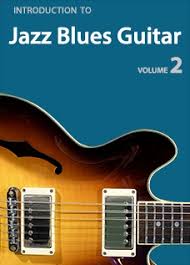 |
|
| Jazz Changes – Martin Williams (book) |
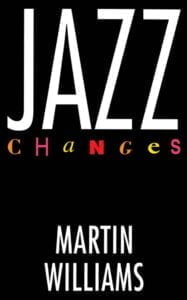 |
|
| Jazz Chords Solos Arr. By Fred Sokolow with Tablature |
 |
|
| Jazz Classics For Guitar Tab Sheet Music |
 |
Jazz Classics For Guitar Tab Sheet Music |
| Jazz Classics For Solo Guitar Chord Melody Arrangements With Tab by Robert B. Yelin |
 |
Jazz Classics For Solo Guitar Chord Melody Arrangements With Tab |
| Jazz Classics Jazz Piano Solos Series Volume 14 |
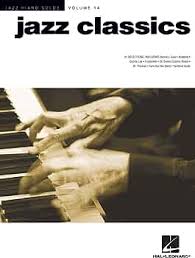 |
Jazz Classics Jazz Piano Solos Series Volume 14 |
| Jazz Club Piano Solos – Vol 1 Easy Piano by Stephen Duro |
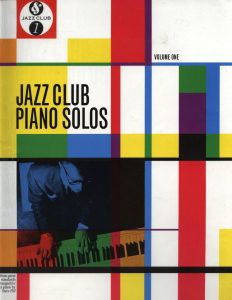 |
Jazz Club Piano Solos – Vol 1 |
| Jazz Club Piano Solos – Vol 2 by Stephen Duro |
 |
Jazz Club Piano Solos – Vol 2 |
| Jazz Club Piano Solos – Vol 3 by Stephen Duro |
 |
Jazz Club Piano Solos – Vol 3 |
| Jazz Collection Classical Guitar Students Library |
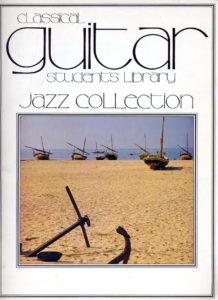 |
Jazz Collection Classical Guitar Students Library |
| Jazz Composition Theory And Practice |
 |
|
| Jazz Czerny by Jerry Gray |
 |
|
| Jazz Ear Training Melodic Dictation Transcription Exercise 8 Musescore File.mscz | ||
| Jazz Ear Training Chords And Arpeggios C△, C7, C 7, Cø Musescore File.mscz | ||
| Jazz Ear Training Chromatic Scale Ex. 1.mscz | ||
| Jazz Ear Training Ex. 9 Major Triads Root Position Answers Musescore File.mscz | ||
| Jazz Ear Training Major And Minor 2nds Ex. 2.mscz | ||
| Jazz Ear Training Major And Minor 3rd Intervals Ex. 3.mscz | ||
| Jazz Ear Training Major And Minor 7th And 8va. Ex. 6 Musescore File.mscz | ||
| Jazz Ear Training Perfect 4ths Augmented 4ths & Perfect 5th Intervals Musescore Musescore File.mscz | ||
| Jazz Ear Training Perfect Major And Minor 6th Intervals Ex. 5 Musescore File.mscz | ||
| Jazz Essential Jazz The First 100 Years (Henry Martin Keith Waters) Book |
 |
|
| Jazz Etude Inspirations Songbook Eight Piano Etudes Inspired By The Masters By Jeremy Siskind |
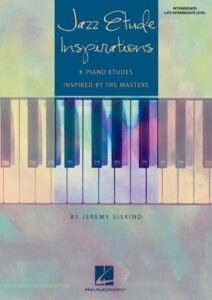 |
Jazz Etude Inspirations Songbook Eight Piano Etudes Inspired By The Masters By Jeremy Siskind |
| Jazz Fake Book |
 |
|
| Jazz For Dummies by Dirk Sutro (2nd edition) |
 |
|
| Jazz For Lovers Jazz Piano Solos Series Volume 23 |
 |
Jazz For Lovers Jazz Piano Solos Series Volume 23 |
| Jazz For The Young Pianist Exercises (N. 1) (Musescore File).mscz | ||
| Jazz Fusion Jazz Piano Solos Series Volume 54 Piano Vocal guitar chords |
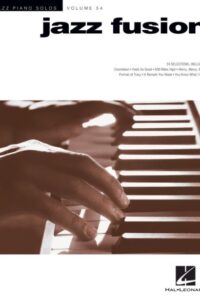 |
Jazz Fusion Jazz Piano Solos Series Volume 54 Piano Vocal guitar chords |
| Jazz Goes Classic – Jazz Favorites For Classic Guitar |
 |
Jazz Goes Classic – Jazz Favorites For Classic Guitar |
| Jazz Goes To The Movies Piano Vocal Chords |
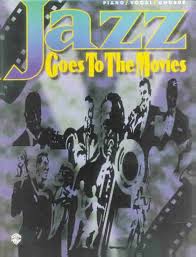 |
Jazz Goes To The Movies Piano Vocal Chords |
| Jazz Guitar (by Bill Hart) The Complete Chords Melody Method with Tablature |
 |
Jazz Guitar (by Bill Hart) The Complete Chords Melody Method with Tablature |
| Jazz Guitar Book 1 Mickey Baker |
 |
|
| Jazz Guitar Book Complete Fingerstyle Mel Bay’s by Alan de Mause with Tablature |
 |
Jazz Guitar Book Complete Fingerstyle Mel Bay’s by Alan de Mause |
| Jazz Guitar Chord Bible |
 |
|
| Jazz Guitar Greats by Adrian Ingram (Mel Bay) |
 |
Jazz Guitar Greats by Adrian Ingram (Mel Bay) |
| Jazz Guitar Lick – George Benson style.mscz | ||
| Jazz Guitar Licks 25 Licks From The Harmonic Minor Scale Its Modes TABs (Gareth Evans) |
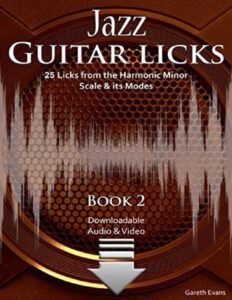 |
|
| Jazz Guitar Mickey Baker Complete Course In Jazz Guitar Book 2 |
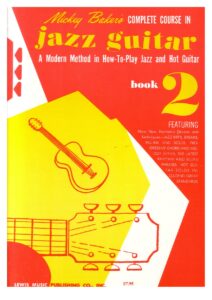 |
|
| Jazz Guitar Omnibook For C instruments Transcribed exactly from Artist recorded solos with Tablature |
 |
Jazz Guitar Omnibook For C instruments Transcribed exactly from Artist recorded solos with Tablature |
| Jazz Guitar Primer Ebook Terence Wright Guitar |
 |
Jazz Guitar Primer Ebook Terence Wright Guitar |
| Jazz Guitar Standards – Chord Melody Solos (Book+2 CDs MP3 audio tracks play along with Tablature) |
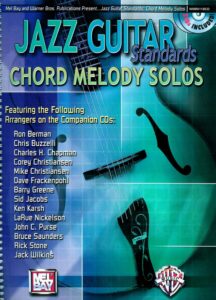 |
Jazz guitar standards |
| Jazz Hanon – Leo Alfassy |
 |
Jazz Hanon – Alfassy, Leo |
| Jazz Harmony Book David Berkman (with MP3 audio files) |
 |
Jazz Harmony Book |
| Jazz Hymns For The Intermediate Pianist arranged by Mark Hayes |
 |
Jazz Hymns For The Intermediate Pianist arranged by Mark Hayes |
| Jazz Improvisation Basic Training (Book) by John Waugh |
 |
|
| Jazz Improvisation Handbook 1 by Alex Noppe |
 |
Jazz Improvisation Handbook 1 by Alex Noppe |
| Jazz Improvisation Handbook 2 by Alex Noppe Bebop |
 |
Jazz Improvisation Handbook 2 by Alex Noppe Bebop |
| Jazz Improvisation Handbook 3 by Alex Noppe Modern Jazz |
 |
Jazz Improvisation Handbook 3 by Alex Noppe Modern Jazz |
| Jazz Improvisation Handbook 4 by Alex Noppe Practicing Jazz |
 |
Jazz Improvisation Handbook 4 by Alex Noppe Practicing Jazz |
| Jazz Improvisation Sam Most |
 |
Jazz Improvisation Sam Most |
| Jazz Improvisation Using Simple Melodic Embellishment by Mike Titlebaum |
 |
Jazz Improvisation Using Simple Melodic Embellishment |
| Jazz Improvistion 1 Handbook (Español – Spanish ) by Alex Noppe |
 |
Jazz Improvistion 1 Handbook (Español – Spanish ) by Alex Noppe |
